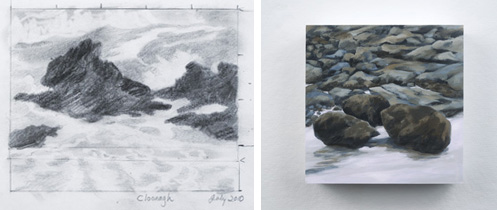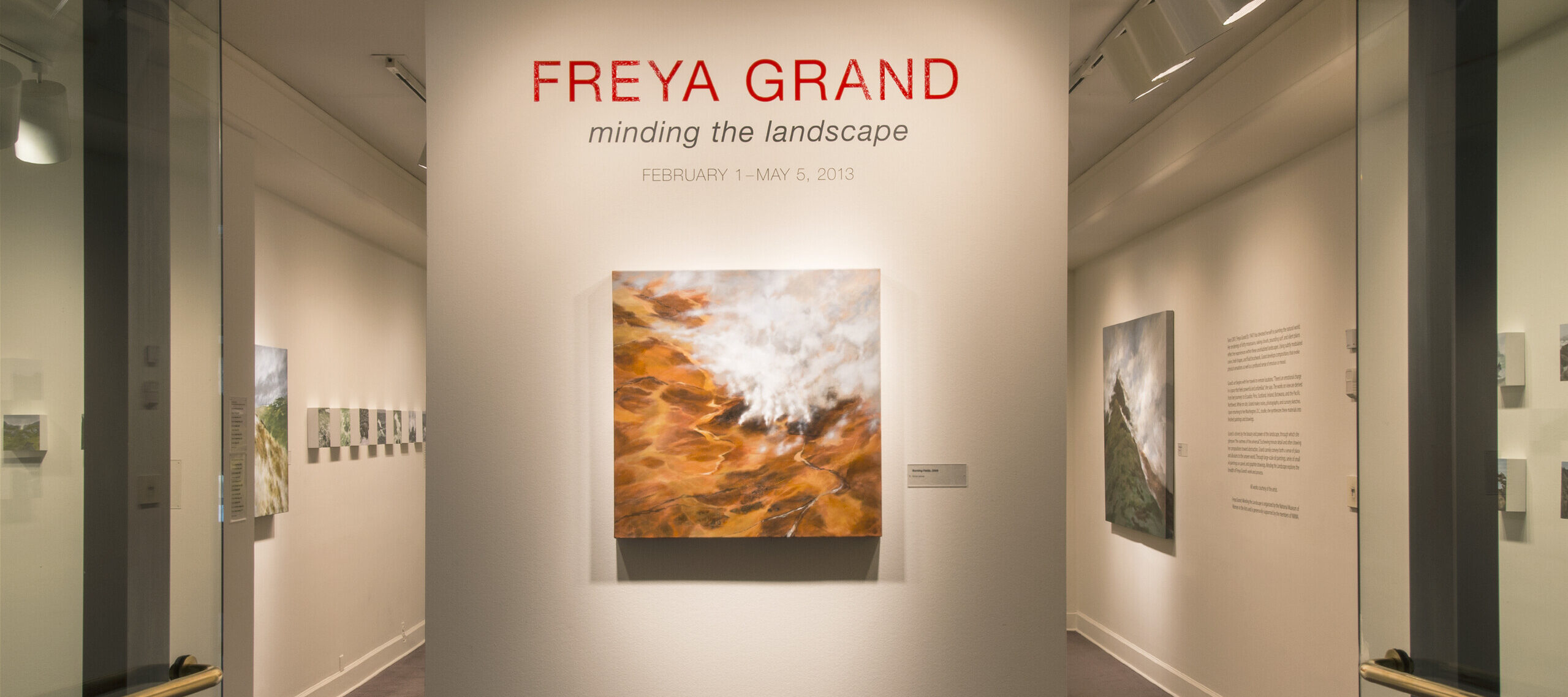(This is Part 2 of a series on Freya Grand—click here for Part 1.)
In addition to the Romantic and sublime that can be seen in Freya Grand’s work, the idea of “minding the landscape,” and her way of presenting it, also recalls the thinking of Leonardo with regard to the earth and the elements. Leonardo spent many years researching geology and water, and conceptualizing the formation of the earth, both in his writings and his paintings. He too went exploring mountains, which were, for him, the most visible manifestation of the way the earth came into being, and to some extent, he can be seen to have anticipated Burke’s theory of the sublime.

Leonardo wrote that coming upon a great cavern he “stood for some time, stupefied and incomprehending of such a thing…Suddenly two things arose in me, fear and desire: fear of the menacing darkness of the cavern, desire to see if there were any marvelous thing within it.” This experience gave rise to the cavernous rocks in his painting The Virgin of the Rocks (1483, Louvre, Paris).
But Leonardo also spoke of the earth being a body, a living being that resembled the human body in many ways. The rocks are like bones, he said, the framework of the body. The rivers and streams are like the veins and arteries. The ocean tides are like the earth’s breathing.
I feel that Grand’s paintings convey this connection of body and earth, depicting a sense of deep, hidden life in those waters moving over rocks, in those magnificent volcanoes and sweeping mountain ranges. In her representation of them, they seem to breathe and move, as if still in formation.

Thought of in this way, Grand’s art has a rich art historical pedigree. Her art reflects Leonardo’s love and awe of nature and her systems, and connects to European Romanticism. But her family line includes the great landscape painters of America like F.E. Church who, like Grand, sought out the wild beauty of remote places. She has added her own misty link to that chain.
